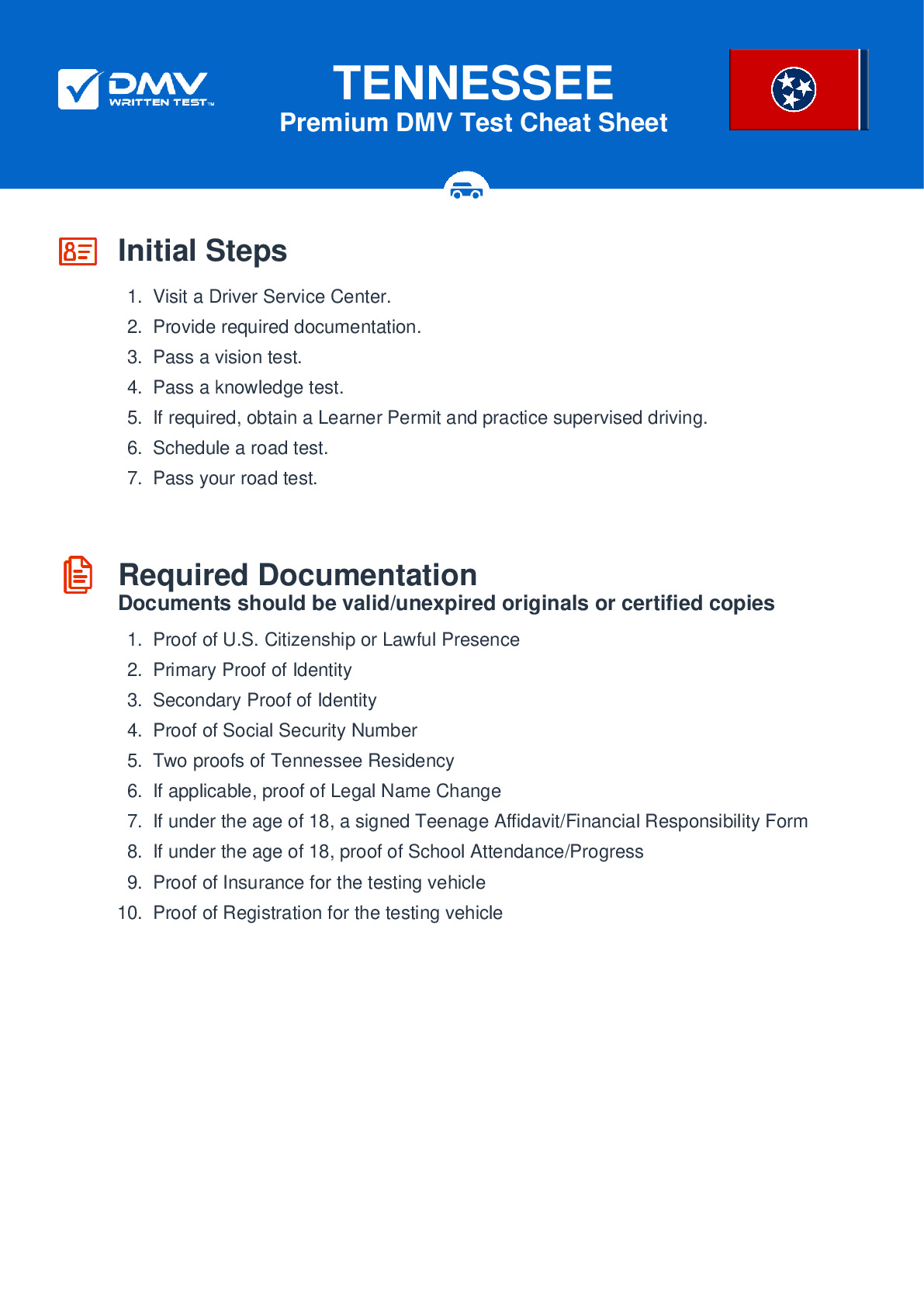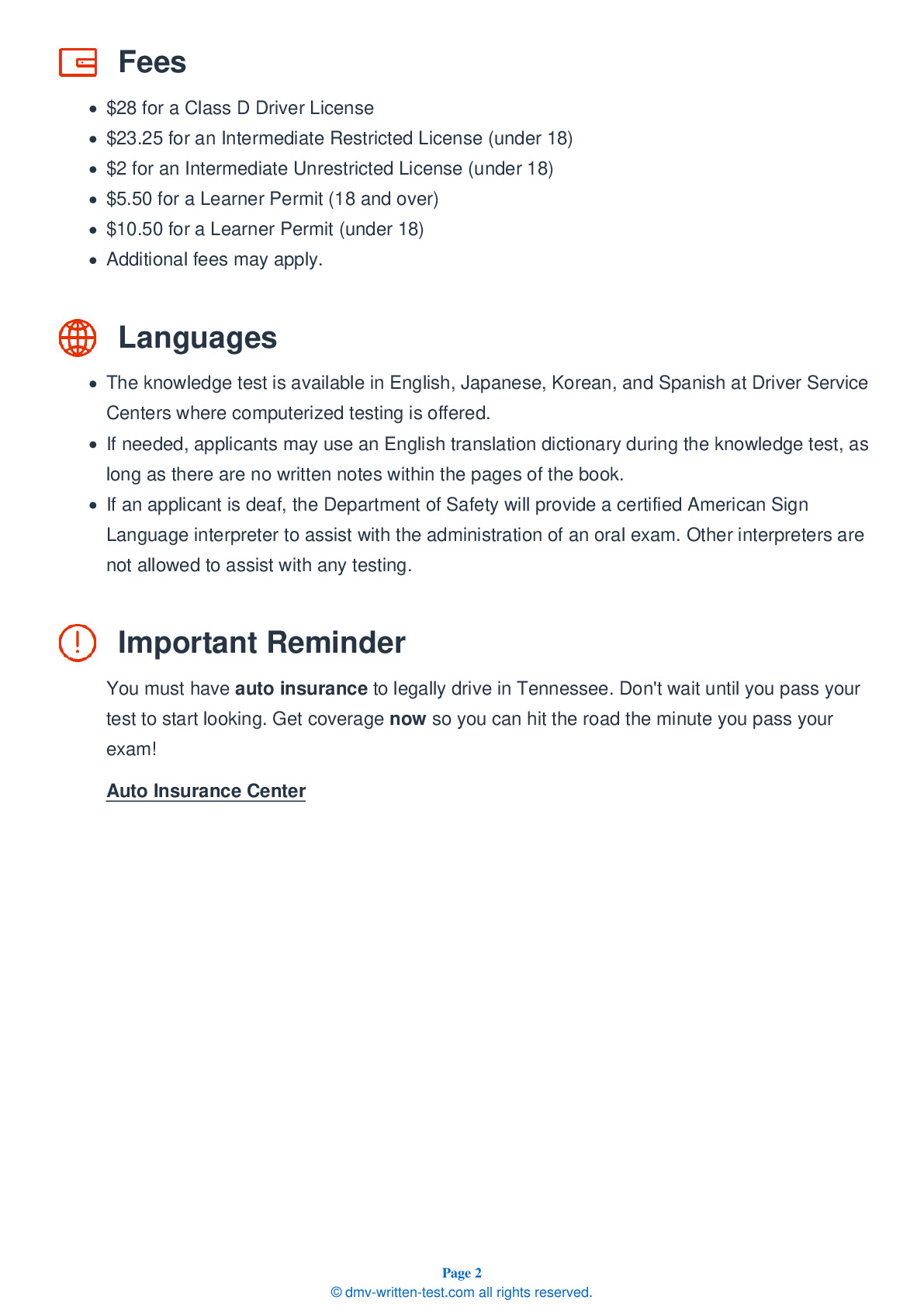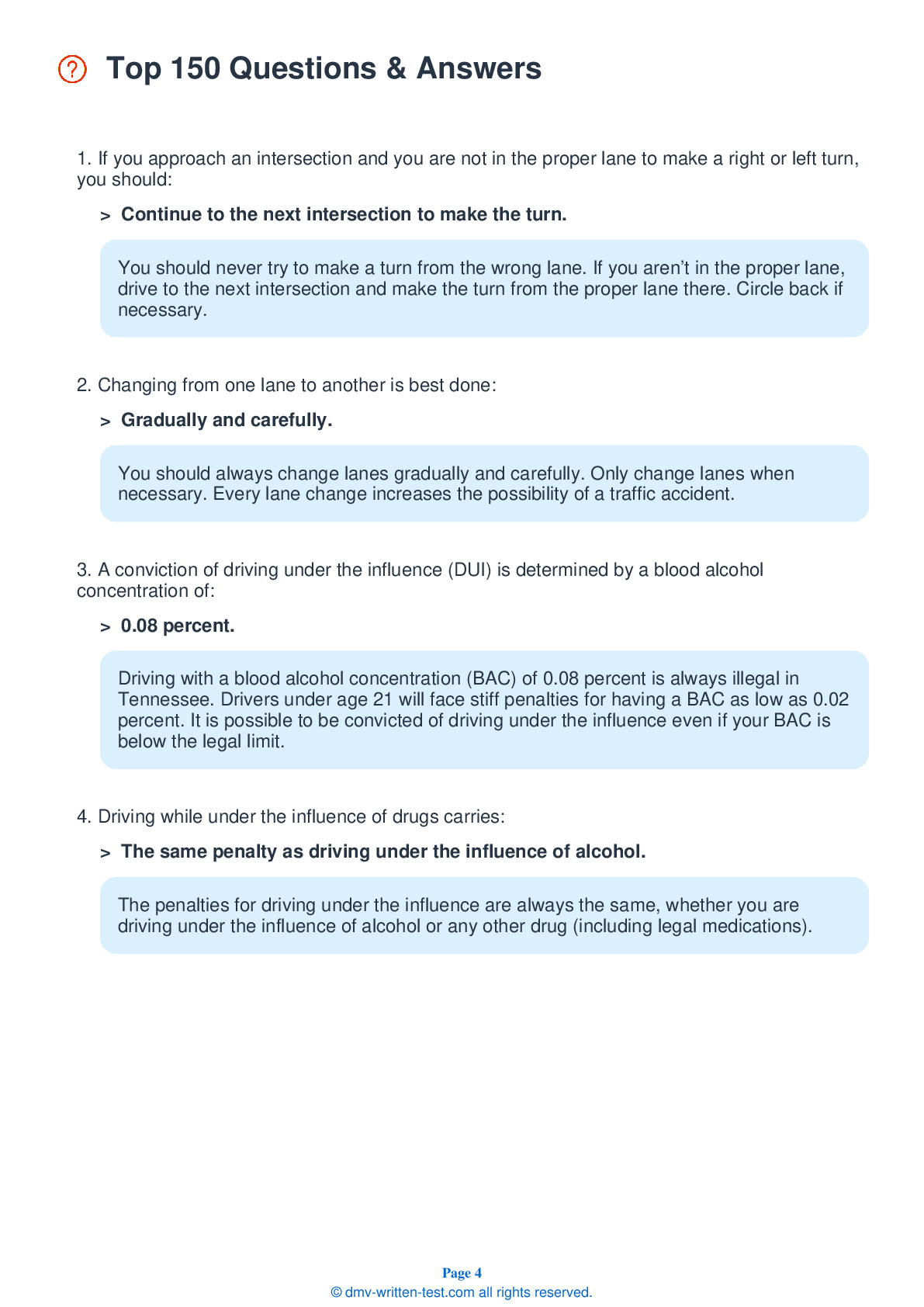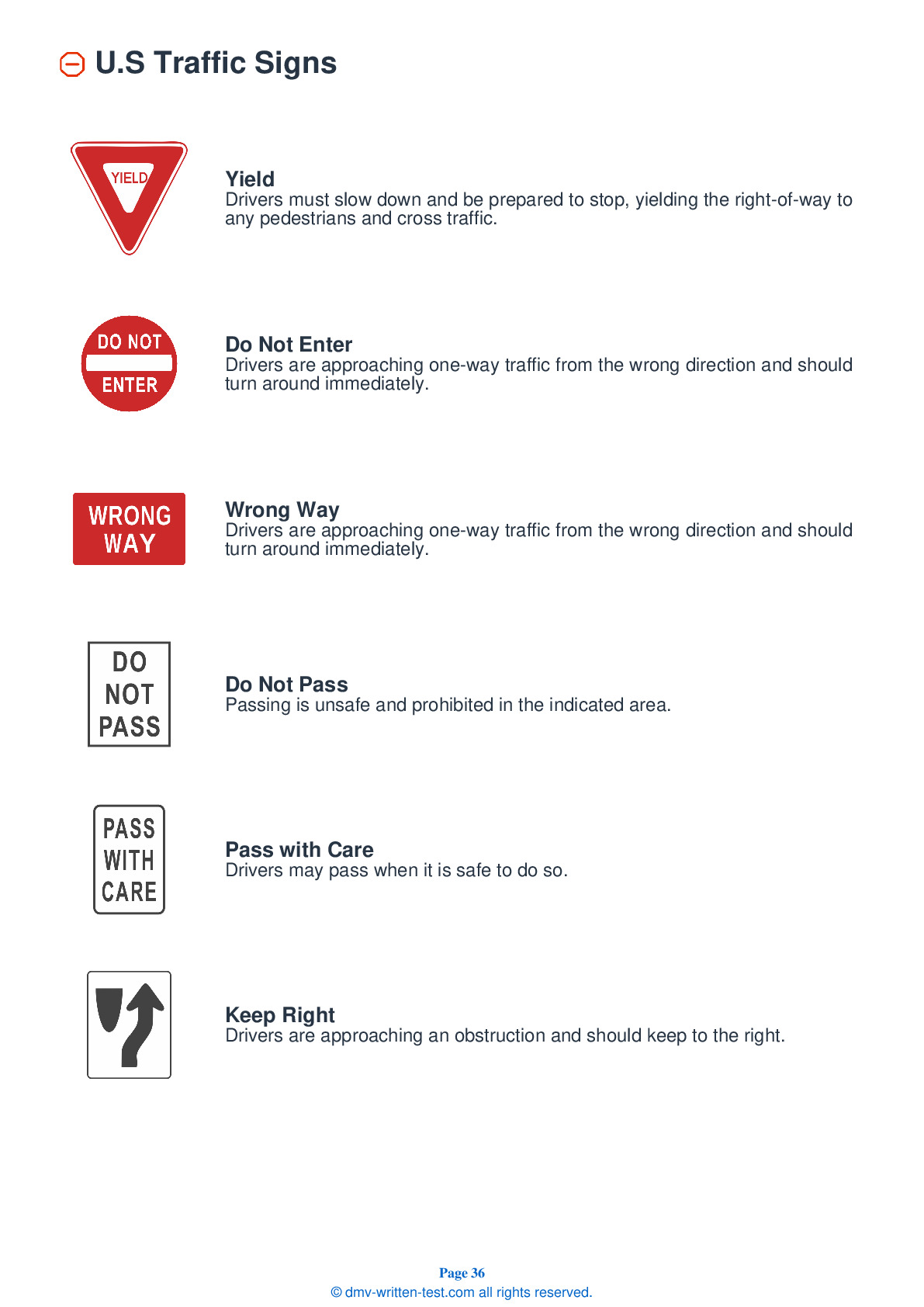2025 Tennessee Permit Test 23
The following questions are from real DMV written tests. These are some of the actual permit questions you will face in Tennessee. Each permit practice test question has three answer choices. Select one answer for each question and select "grade this section." You can find this button at the bottom of the drivers license quiz. For a complete list of questions and answers for Tennessee please visit https://cheat-sheets.dmv-written-test.com/en/tennessee/car.
Number of Tests
Number of Question
Passing Score
9. This road sign means:
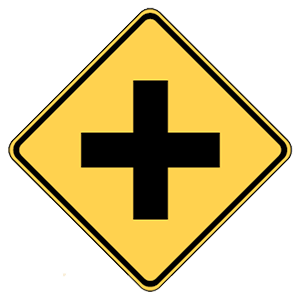
Explanation
Warning signs provide notice to road users of a situation that might not be readily apparent and are usually yellow with black markings. This sign warns drivers of an upcoming intersection so they may prepare for potential traffic or prepare to turn.
10. When passing, you should move back into the right lane when:
Explanation
Do not pass unless you have enough space to return to the driving lane. Before you return to the driving lane, be sure you have enough room between yourself and the vehicle you have passed. When you can see both headlights of the passed vehicle in your rearview mirror, it is safe to return to the driving lane.
11. You are approaching an intersection with a steady yellow traffic light. If you have not already entered the intersection, you should:
Explanation
When a steady yellow light appears on a traffic signal, you should prepare to stop. If you are already within the intersection, you should clear the intersection as quickly as possible.
12. If you miss your exit on the freeway, you should not:
Explanation
If you miss your turn or exit, do not back up in the travel lane or on the shoulder. Continue to drive to the next exit or crossroad. Drivers do not expect a vehicle to be backing toward them on the roadway and doing so will likely cause a collision.
13. Roads are slippery after it first starts to rain. When the road is slippery, you should:
Explanation
A wet, slippery road does not allow your tires the traction they need, so it is necessary to drive more slowly on a wet road than you would on a dry road. To reduce the risk of skidding, you should avoid fast turns or stops.
14. If the rear of your vehicle is skidding to the left, you should:
Explanation
If you begin to skid on a wet or icy road, take your foot off the accelerator, stay off the brakes, and turn your steering wheel in the direction of the skid. However, if you have anti-lock brakes, you should apply your brakes firmly and steer straight ahead.
15. When approaching an intersection that is controlled by a flashing red traffic signal, you must:
Explanation
Treat a flashing red traffic signal the same as you would treat a stop sign. Come to a complete stop, yield to oncoming traffic or pedestrians, and proceed when the way is clear.
16. You should always travel:
Explanation
